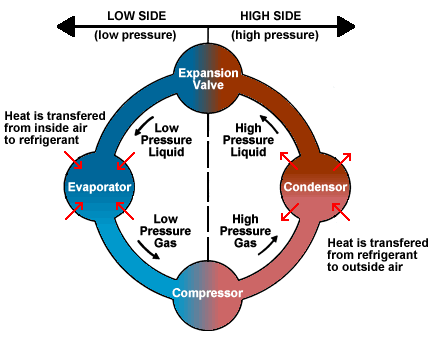HVAC Basics
Facility maintenance managers, HVAC contractors; HOA board members; estate and high-rise building managers; building and facility engineers; and commercial property managers all have one important responsibility to think about - running an HVAC.
Heating, cooling and air conditioning is vital to any part of real estate, whether for residential, commercial or industrial purposes.
Here's a list of HVAC system fundamentals:
What is HVAC?
Heating, Ventilation and Air Conditioning systems are tasked with circulating fresh air within living spaces, while maintaining the optimal temperature to keep the occupants comfortable. Maintaining an efficient, working HVAC system is paramount to keeping management smooth and providing thermal comfort.
Parts of an HVAC System
Property managers should have an idea of how an HVAC system operates and what to do when complications occur. Here are the most important things to remember about each part:
Compressor
The heart of an HVAC system, compressors pump the refrigerant through respective components in a looping pattern. The refrigerant enters the compressor as low-pressure vapor and exits as high-pressure vapor.
Condenser Coil
This HVAC system component is responsible for rejecting the heat load absorbed by the evaporator coil. If the condenser oil is neglected, improper cooling will occur causing a high head pressure.
Evaporator Coil
This component absorbs the heat load to the condenser coil for eventual rejection. If the evaporator coil is impacted or dirty, then the HVAC will have improper cooling and low suction pressure.
Condenser Fan Motor
Condenser fan motors help in rejecting the heat load and maintaining optimal head pressure for optimal compressor operation.
Evaporator Blower Motor
Evaporator blower motor is designed to force or push manipulated air through the duct stream.
Thermostatic Expansion Valve
The TXV is a device that regulates the amount of liquid refrigerant flowing through the evaporator. It is designed to maximize evaporator efficiency while diverting the flow of excess refrigerant back into the compressor (called floodback).
Cooling Tower
A component of an HVAC system which rejects the heat load absorbed by either the heat pump or evaporator coil carried by water. The water in it transports the heat load which was absorbed by the evaporator coil, dissipating it in the cooling tower. The water that passes via the heat exchanger normalizes head pressure.
Chiller
This is a machine that provides chilled water, which is used in conjunction with the HVAC system's cooling.
Pumps
These components are primarily designed to move water at the chill water and condenser water supply sections. Pumps move water chilled to 44 degrees to fancoils, and once the water reaches the fancoil, temperature rises to roughly around 47-52 degrees. Pumps that move the condenser water supply are rejected at cooling temperatures ranging from 90 to 100 degrees. Factors such as demand load, ambience, the cooling tower fill's condition, and strainers can vary the temperature during circulation.
Duct System
This can either be rectangular or spiral, flanged or drive. The main trunk line is where the main HVAC air flows, branching out to distribution points that carry the cooled or warmed air into small office suites and large conference rooms in commercial buildings.
Boiler
The boiler is pressure equipment which heats water. The choices when it comes to selecting boiler types are either low or high pressure systems, or hot water and steam.
Energy Management Monitoring Systems
Also known as BAS (Building Automation Systems), this HVAC component helps schedule, control and monitor commercial equipment such as cooling towers, pumps, package units, air compressors and handlers, boilers, temperature sensors, chillers and VAV boxes within the office and in office living spaces.







